 |
 |
 |
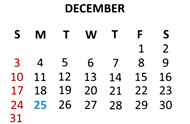 |
- Christmas Weblog
- Christmas Past
Christmas '21
 Christmas '20
Christmas '19
Christmas '18
Christmas '17
Christmas '16
Christmas '15
Christmas '14
Christmas '13
Christmas '12
Christmas '11
Christmas '10
Christmas '09
Christmas '08
Christmas '07
Christmas '06
Christmas '05
Christmas '04
Christmas '03
Christmas '02
Christmas '01
Christmas '00
Christmas '99
Christmas '20
Christmas '19
Christmas '18
Christmas '17
Christmas '16
Christmas '15
Christmas '14
Christmas '13
Christmas '12
Christmas '11
Christmas '10
Christmas '09
Christmas '08
Christmas '07
Christmas '06
Christmas '05
Christmas '04
Christmas '03
Christmas '02
Christmas '01
Christmas '00
Christmas '99
- Christmas Present
- Christmas Yet to Come
The span of recorded history is about 5,000 years. The starting point of Hebrew chronology is 3761 BC, which is the year of the creation of the world according to the Old Testament. (The current Hebrew year is 5783.)
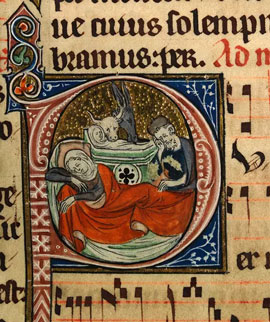
Guessing the year of Christ's birth is a good way to start a lively conversation if the crowd you run with includes archeologists and anthropologists, or even a woke religious scholar or two. But it barely matters anyway. Catholics didn't start venerating His birth until some 400 years after His crucifixion. And Christmas from the beginning was, at best, just the second most important day in the liturgical calendar.
The observance of Advent began sometime in the fifth century. Bishop Perpetuus of Tours directed that, starting with St. Martin's Day (November 11) until Christmas, members of the diocese should fast three times a week. Nov. 11 to Dec. 25: that's a lot of fasting. In the thirteenth century,Church leaders recognized that the "fast of Advent" was not commonly practised. So they shortened it, from the feast of Saint Andrew until Christmas Day. The solemnity of this apostle was more universal than that of St. Martin. The feast of St. Andrew is Nov. 30. Over the centuries, the western Church shephards basically kept the date but lost the fasting. (Eastern Church faithful still do fast.)
So it's reasonable to say that the, as it were, "official" run-up to Christmas in its early form was four weeks. That was then, although things did stay that way for a while. The focus of Christmas was primarily as a feast day in the Church's long calendar, observed with little more than going to church and noting that the color of the celebrant's vestments changed from penitent purple to celebratory white. And the four weeks of advent came to represent a season of hopeful anticipation and preparation for the birth of the Savior.
In the early Middle Ages, Christmas was still overshadowed by the Epiphany, which in western Christianity focused on the visit of the magi (Christmas for the gentiles). Christmas Day's importance increased gradually after Charlemagne chose to be crowned Emperor on Christmas Day in 800. King Edmund the Martyr (of East Anglia) was anointed on Christmas in 855 and King William I of England was crowned on Christmas Day 1066.
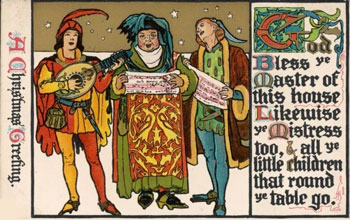
Christmas gradually migrateed from prayer and fasting to eating and drinking. Not totally surprising given that the Church's timing of the Christmas observance evolved, in large part by design, via a merger between honoring Christ's birth and observance acknowledging persistent pagan traditions (Saturnalia, Solstice, Yule and others) of a decidedly more secular, and raucous, character. The elders might have foreseen what was to come. Girls just want to have fun.
In 1377, King Richard II of England hosted a Christmas feast where 28 oxen and 300 sheep were consumed. As the Middle Ages progressed, the holiday became so prominent that chroniclers routinely noted the details of royal Christmas celebrations. In England, eating, dancing, singing, sporting, and card playing steadily escalated, and by the 17th century Christmas routinely featured lavish dinners, elaborate masques, choral performances and pageants. And drinking.

Critics were fuming. Puritans took to condemning elaborate, and some might add dissolute, celebrations, characterizing them as the "trappings of popery" or the "rags of the Beast" (a reference to the apocalypse described in the Book of Revelations). The Catholic Church tried to steer its faithful back to the religious character of the holiday.
Following the English Civil War in 1647 the victorious Puritan rulers simply banned Christmas. Protests followed and pro-Christmas rioting broke out in several cities. For weeks Canterbury was controlled by rioters who decorated doorways with holly and shouted royalist slogans. (The Restoration of King Charles II in 1660 ended the ban.) During the French Revolution, Christian Christmas religious services were banned. Bakers were even taken to task for baking "Galette de rois." (Three Kings rolls; solution: they renamed them.) Remember "Freedom Fries"?
Puritans in colonial America didn't approve of Christmas either. Non-Puritan New Englanders deplored the loss of Christmas holidays, but Christmas observance was nonetheless outlawed in Boston in 1659. (Revoked in 1681.) It was not until the mid-19th century that celebrating Christmas became fashionable in the Boston region.
Elsewhere in America Christmas was observed freely, but in general the holiday fell out of favor in the United States after the American Revolution, seen as an English custom.
By the early-19th century, Christmas in England was again regarded benignly as a time of heartfelt if not overly religious celebration. Charles Dickens's "A Christmas Carol" is thought to have been instrumental in reviving the spirit of Christmas and seasonal merriment, emphasizing family, goodwill and compassion toward the less fortunate.
Dickens influenced many aspects of Christmas we celebrate today, like family gatherings, seasonal food and drink, dancing, games, and a "festive generosity of spirit." (The traditional holiday greeting, "Merry Christmas," was popularized following publishing of this fashionable Christmas story.)
The vision of Christmas in America in the early 1800s was similarly derived, in large part from New York literati including Washington Irving, Clement Moore, O'Henry and Thomas Nast. Their collective efforts leaned heavily on Dutch traditions and even created the contemporary image of Santa Claus. Coca Cola helped.
And that's where things stood for a while. Four-week run-up, twelve crazy nights. Simpler, more reflective, less frenetic times. And that's where things might well have stood but for the next modern miracle to come down the pike of the March of Time: retail marketing.
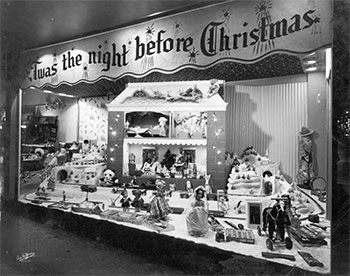
Markets for buying and selling existed from the very dawn of the human occupation. Before the invention of currency even, when transactions would be valued through bartering. And they grew apace over the centuries commensurate with society's commercial needs.
Then, toward the turn of the nineteenth century, history recorded the rise of a new concept: large scale marketing and the department store. And one of the first things they started selling, with concentrated and massively inclusive effort, was Christmas, not just toys and clothes, presents and decoration but the very overarching concept itself.
Almost overnight, Christmas-related selling went from a "push strategy" to a "pull strategy." (Push the product out vs. pull the customer in: look it up), and that has made all the difference. As more effort went into moving Christmas merchandise by moving human hearts, more energy went into broad-based promotion efforts and more time was needed to execute the strategy. The Church kind of lost control of the run-up thing because in the modern world, four weeks just wasn't enough.
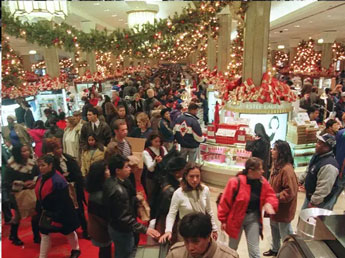
The early warning jolt that Christmas was nigh for the boys and girls of the early '50s was the arrival in the mailbox of the department store toy catalogs. Beguiling productions bound to put any child in best behavior mode even while managing to drive his parents crazy. Actually the toy sections were limited to just a few pages in the back; the preceding pages featured general merchandise: clothes, jewelry and the like. Most kids never even noticed. Some parents took to intercepting the catalogs and squirreling them away just to keep the fever down. And trips to those stores to see the merchandise up close were, well, wondrous events.
It was in the '50s as well that shopping malls made the scene, whole clusters of stores anchored by at least one department store or big box outlet. And they could all share one Santa Claus and lots of decorations. In 1992 things really got hot with the opening of Mall of America in Bloomington, Minnesota. A four-level behemoth with hundreds of stores, plus restaurants, a theme park, cinema and aquarium, processing 40 million visitors each year. (Minnesota's entire population is only 5 million people.) At 5,600,000 square feet, it remains the country's largest, but over 20 of its largest sisters weigh in at a million square feet or more. By 2017 there were there were 116,000 shopping malls in the US.
In 1963, a young foggy-eyed high school freshman trudged back to school from Thanksgiving break down the Bronx's Fordham Rd. and noted that over the weekend store windows had all been newly festooned with Christmas decorations. This year, almost half of all holiday shoppers started browsing and buying seasonal items well before Halloween. And why not? It takes time to collect that much money. In 2021, total retail sales topped $6 trillion for the year; Christmas retail sales accounted $889.3 billion of that.

And we're still not finished. In both 2021 and 2022, 43% of shoppers in the U.S. planned to shop in person during the holiday season. About 57% of consumers had plans to shop online. Online shopping online became possible once the internet was invented (and eventually opened to the public in 1991). Pizza Hut claims to have been the first to accept an online order, in 1994: a pepperoni and mushroom pizza with extra cheese. In 1995 Amazon was born. Winner and still champ.
In 2022, online holiday retail sales in the U.S. is approaching $250 billion. Cyber Monday became the biggest single online shopping day in U.S. history, with revenue figures hitting approximately $10.7 billion.
But really, why wait until Halloween? Christmas is only 10 days away, and look how far behind you are.

Dec. 10 - 3.18 Dec. 15 - 3.63 Dec. 20 - 3.64 Dec. 25 - 3.76
Dec. 16 - 3.18 Dec. 25 - 3.76 yr. end: 3.91
|
34%
|
12%
|
14%
|
12%
|
16%
|
3%
|
7%
|